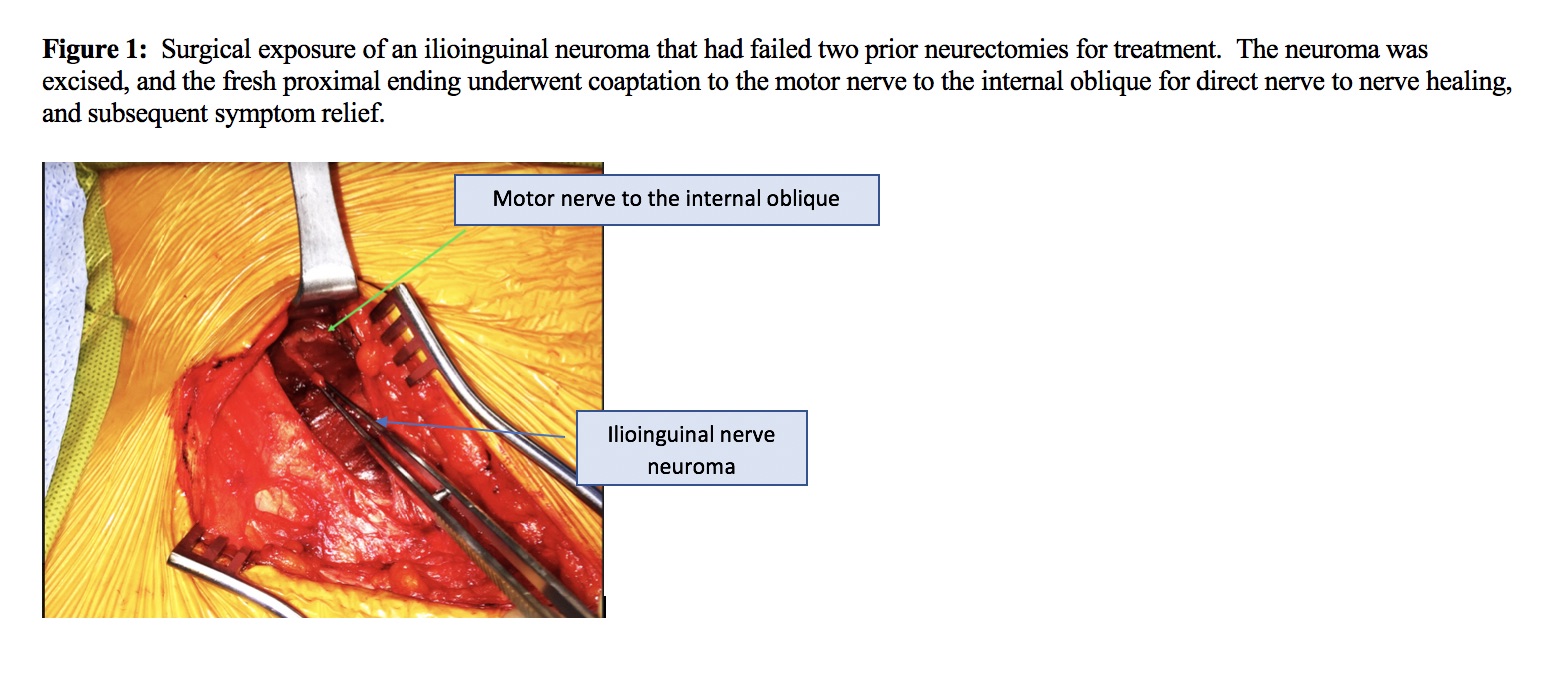Abdominal wall neuroma pain: a new area for application of targeted muscle reinnervation
Ava G Chappell, MD1, Christopher S Yang, BA2 and Gregory A Dumanian, MD1, (1)Division of Plastic Surgery, Northwestern University, Chicago, IL, (2)Northwestern University Feinberg School of Medicine, Chicago, IL
Purpose:
Abdominal wall neuroma pain is an under-recognized significant contributor to chronic abdominal wall pain. Patients with chronic abdominal wall pain from neuromas are clinical challenges to health care providers as this pain can imitate other visceral etiologies. In addition, there is a paucity of published clinical studies on reliable strategies to diagnose and treat localized abdominal wall neuroma pain. All patients who undergo abdominal surgery are at risk for the development of neuromas to the nerves innervating the abdominal wall and subsequent chronic neuropathic pain syndromes. For example, many patients suffer from groin pain after inguinal hernia repair, one of the most common general surgery procedures, due to an ilioinguinal neuroma. As chronic abdominal wall neuroma pain can lead to significant disability and decreased quality of life for many people, effective methods of treatment are indicated. Existing surgical treatments for related conditions, such as ilioinguinal neuroma, intercostal neuralgia and anterior cutaneous nerve entrapment syndrome (ACNES), include simple excision of the inflamed peripheral nerve/neuroma, and excision and implantation of the freshened proximal nerve segment into local muscle. However, the success of targeted muscle reinnervation (TMR) in treatment and prevention of post amputation pain syndromes suggests that TMR can be employed as an effective, curative treatment of abdominal wall neuroma pain.
Methods:
We conducted a retrospective review of the outcomes of patients treated with TMR for abdominal wall neuroma pain. These procedures were performed by one surgeon at one academic institution. The TMR procedure for neuropathic groin pain involved dissection of the ilioinguinal nerve back towards the spine, and then coaptation to a motor nerve to the internal oblique and transversus abdominis. The specific end points of the study included: patient reported pain relief at follow up appointments, number of revision surgeries, change in post-operative analgesic pain medication usage, number and type of post-operative complications, and follow up period.
Results:
Data analysis and results pending at this time.
Back to 2020 ePosters

